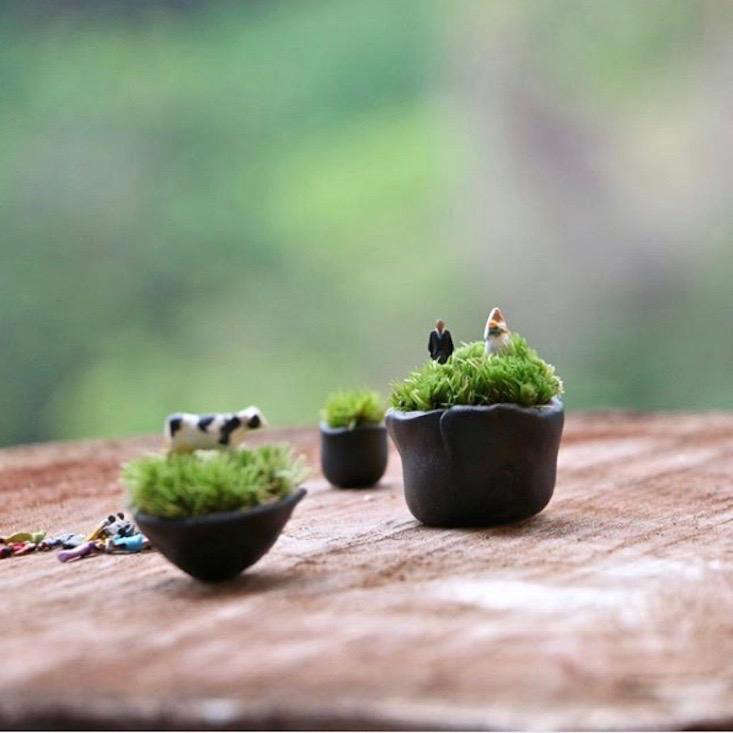Have we reached “peak terrarium?” A few years back—prior to 2012, say—terrariums were niche. (That’s a nice way of saying nerdy.) They were possibly something a houseplant obsessive would own, but not something you’d ever spy in the home of someone younger than 35 without an unusually keen interest in plants.
But now? Terrariums are ubiquitous, having come a long way from their origins in the Victorian era, when plant collector Nathaniel Bagshaw Ward raised the earliest specimens under glass. You can pick up a terrarium in US big box stores such as Target, and in UK discount retailers such as Primark, as well as from high-end outfits such as The Conran Shop and Sprout Home.
But when any trend peaks, we look to find new ways to make it fresh. Here’s where terrariums are headed next:
Miniature Terrariums

We’ve seen terrariums made from lightbulbs; Clear glass Christmas baubles containing Tillandsia (air plants) for your tree; and even terrarium keyrings containing cacti (probably thimble cactus, at a guess). The tiniest of tiny terrariums, as James Wong pointed out recently, aren’t typically sustainable for longer than a few months before they need remaking—the space for soil and air just isn’t great enough—but provided you are prepared to change the plants a couple of times a year, they can work. (A cactus in a keyring, though? That’s just plain wrong.)
Bonsai Terrariums

Choice of tree is vital: tropical rather than temperate is the way forward, with members of the Ficus family being the first choice. Annual replanting work will probably be on the agenda to keep the tree within bounds, but a closed-top bonsai terrarium should need minimal attention day to day.
Underwater Terrariums

Perhaps the terrarium with the lowest maintenance needs of all is one filled with marimo moss balls, which aren’t moss at all, but masses of filamentous algae that roll around at the bottom of lakes in Japan and elsewhere. Sounds unappealing, but they make wonderful features among pretty stones or other artifacts.
Mossariums

Narrative Terrariums

The novelty terrarium may not be our first choice but is undeniably a force in the marketplace: there are Pokemon terrariums. Hobbit terrariums. And yes, inevitably, Star Wars terrariums. These may seem a little too, well, predictable, but a parallel trend sees people using terrariums to tell a story, either fantastical or autobiographical. If you fancy DIY-ing, you can buy tiny figures to set your scene and let your imagination run wild.
If this sounds too difficult to pull off by yourself, companies such as Twig Terrariums in Brooklyn and Mossimoto in Singapore offer to bring your vision to life. As Twig’s website puts it, “Your visit to Costa Rica was so inspirational you want that amazing waterfall captured in glass? Totally!”
Artificial Plant Terrariums

Fake plants are now so super-realistic that they can look stunning and fool just about everyone. Vert+Sauvage in France makes stunning terrariums which you can also order on Etsy; or make your own fake succulent terrarium following this guide from HomemadebyCarmona.
N.B.: See more of our favorite terrariums:
- Gardening 101: How to Make A Closed Terrarium.
- Object of Desire: Glass Egg Terrarium from Design House Stockholm.
- Terrarium Lights: Sustainable Worlds from Spruitje in Norway.
- 10 Easy Pieces: Glass Cloche Terrariums.


















Have a Question or Comment About This Post?
Join the conversation